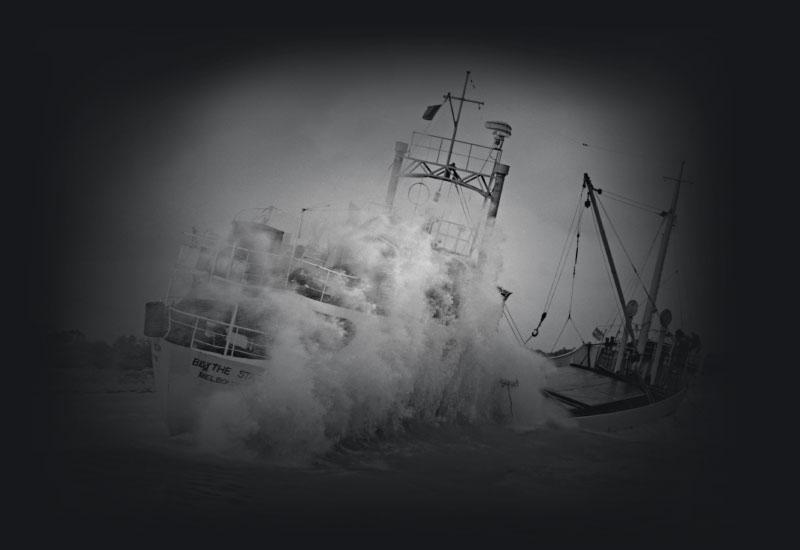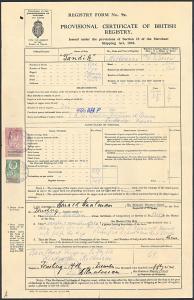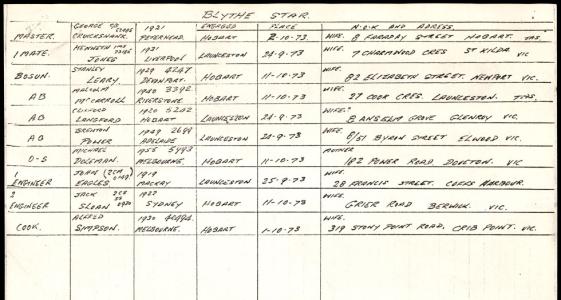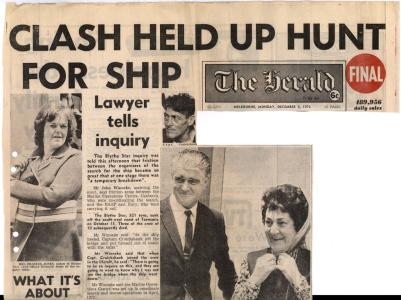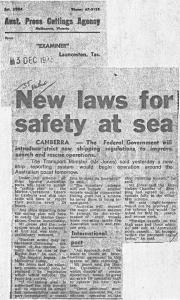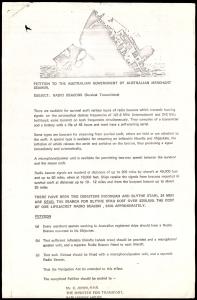Stranded in the Bass Strait
On 12 October 1973, the Blythe Star and its crew of 10 set off from Prince of Wales Bay in Hobart, bound for King Island.
The routine freight journey started with calm seas. However, the next morning, the ship began to tilt, throwing the crew from their beds as it began to take on water. The 45-degree lean made it impossible to launch a lifeboat. Some of the crew managed to free an inflatable life raft, while others jumped overboard. Luckily, by the time the ship sank, all 10 members of the crew were safely on board the tiny life raft. The ship sank so fast that no one was able to send a distress signal.
The crew were stranded in the middle of the rough Bass Strait with just 72-hours’ worth of supplies.
Chief Officer Ken Jones organised turns for the crew to row, and cook Alf Simpson meted out the meagre rations. Their combined efforts kept the crew from giving up, but what followed was a harrowing 10-day fight for hope, as much as for survival.
The bumbling search operation
A series of miscommunications meant that by the time a search and rescue operation started, the crew had been lost at sea for several days.
Despite being one of the biggest search and rescue operations to date in the country, it was hampered by poor collaboration between the Marine Operations Centre, the RAAF and the RAN. After a week, the unsuccessful search was called off.

